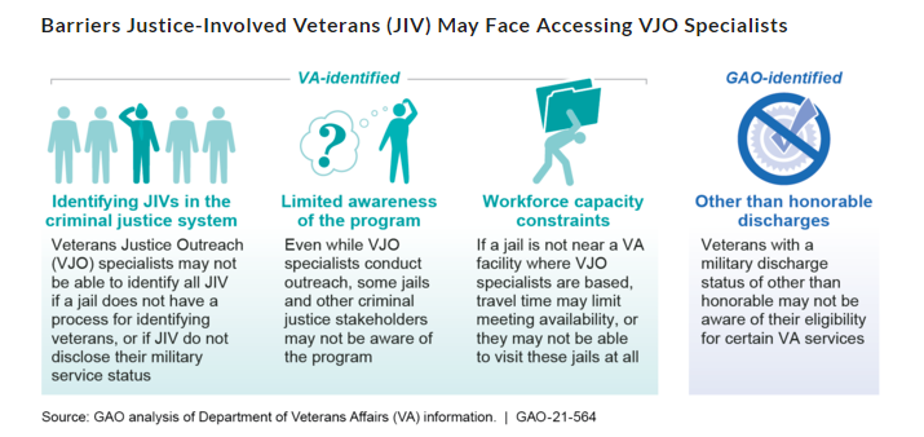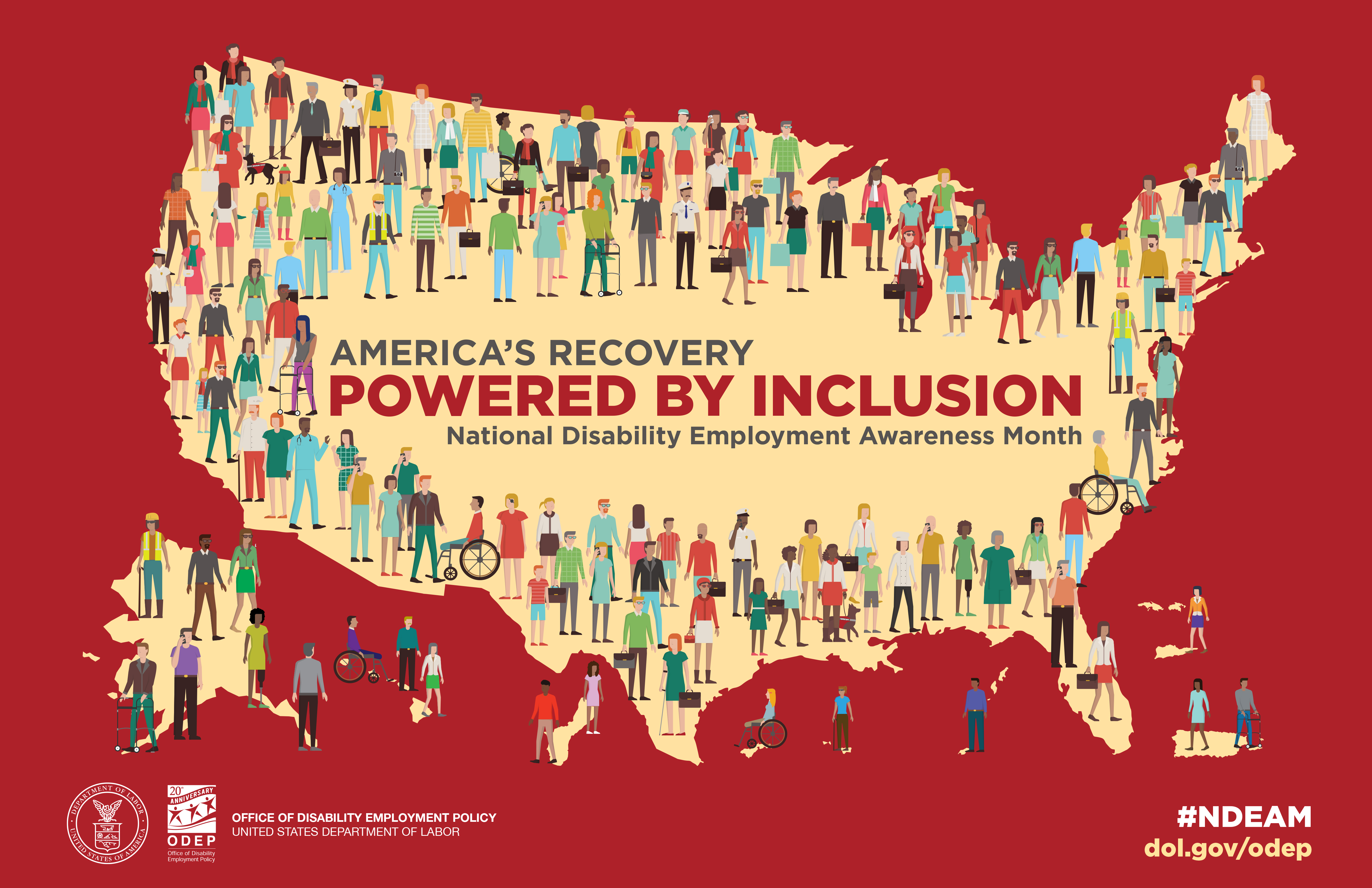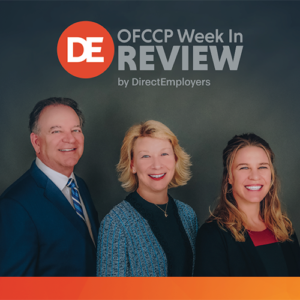
- GAO Seeks to Improve Veterans Justice Outreach Program to Help Veterans and Employers
- A Must Watch Short Video on Writing Good (Inclusive) Job Descriptions
- Federal Contractor Minimum Wage Increase on The Horizon
- AAP Administrators — Budget (A LOT) Of Time for Census Re-Mapping
- The Controversial New NLRB General Counsel Has Now Extended Her Push for New Forms of Damages in NLRB Actions to Include Settlement Negotiations, and Not Just NLRB Adjudications
- Learn & Celebrate! It’s National Hispanic Heritage Month
- White House Safer Federal Workforce Task Force Greenlights Federal Executive Agencies to Impose Vaccination Mandates on Federal Contracts/Subcontracts Beyond Biden’s Federal Contractor Vaccination Mandate
- E-Verify Reminder to Employers
- Get Ideas for National Disability Employment Awareness Month This Thursday Via a Twitter Chat!
Tuesday, September 14, 2021: GAO Seeks to Improve Veterans Justice Outreach Program to Help Veterans and Employers
The Government Accountability Office (GAO) released its report on the Veterans Justice Outreach Program making three recommendations to the U.S. Department of Veterans Affairs (VA) potentially positively impacting employers by making more veterans available for employment. See VA’s progress and the GAO’s recommendations, below.
Background: What is the Veterans Justice Outreach (VJO) Program
Veterans who have been arrested and jailed are at an increased risk of homelessness, mental health conditions, suicide and loss of gainful employment. To address these concerns and prevent re-incarceration, VA created the VJO program in 2007 which served over 30,000 veterans in fiscal year 2020, alone. The program relies on nearly 400 VJO specialists — primarily social workers — who work with jails and municipal courts to identify and assess arrested or incarcerated veterans’ needs and connect them to VA health care services.
GAO Recommendations
The GAO recommends that the VA Under Secretary for Health should take action in three areas:
- Formal Project Plan. Develop and use detailed project plans that define all work activities, time frames, resources, and interim milestones to guide implementation and monitor progress toward achieving objectives.
- Training. Improve training to help VJO specialists conduct targeted outreach to justice-involved veterans through jail administrators. Increase justice-involved veterans’ awareness and understanding of VJO and other program services available to certain justice-involved veterans with other than honorable discharges.
- Research. Enhance its planning for research on the justice-involved veteran population by defining and prioritizing all activities needed to complete planned actions, establishing milestones, and identifying the necessary resources to accomplish the program’s research objectives.
About The GAO
The GAO provides reports and testimonies giving Congress, federal agencies, and the public timely, fact-based, non-partisan information to improve government operations and save taxpayer dollars.
Wednesday, September 15, 2021: A Must Watch Short Video on Writing Good (Inclusive) Job Descriptions

Inclusive Job Descriptions
A well-written job description accurately identifies the essential job functions and qualification standards so as not to deter individuals with disabilities. Learn more in this short (12:24) video, “How to Write Good Job Descriptions.”
Inclusive Outreach Activities & Application Processes
This 8:32 video, “How to Make Sure Your Job Recruitment Activities Are Accessible and Inclusive,” briefly covers the necessary planning and questions employers should ask when hosting or attending various outreach activities.
You can learn more about the Mid-Atlantic ADA Center on its website and see its available videos on YouTube.
Wednesday, September 15, 2021: Federal Contractor Minimum Wage Increase on The Horizon

New Rates: $11.25/hour (previously $10.95/hour) and $7.90/hour (previously $7.65/hour) for tipped employees
When: The new rates take effect on January 1, 2022
Why: Executive Order 13658 and its implementing regulations at 29 CFR part 10
Who: Employees performing work “on or in connection with” covered contracts.
Tip: Read the fine print – there are exclusions!
What About the New $15.00 Rate?
On April 27, 2021, our story “Federal Contractors Beware – New Minimum Wage Coming” breaks down a new EO, Executive Order 14026, “Increasing the Minimum Wage for Federal Contractors.” Look back to that story to get up to speed. However, the short version is that beginning on January 30, 2022, all federal Executive Branch agencies (and the covered “independent establishments”) entering into new, extended, or renewed contract solicitations must incorporate the $15 minimum wage into the contract.
Wednesday, September 15, 2021: AAP Administrators — Budget (A LOT) Of Time for Census Re-Mapping
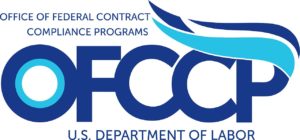
What is Different in the New 2014-2018 EEO Tabulation?
- A reduction of 100 geographical areas (from 2908 to 2808)
- A reduction in census occupation codes (from 488 to 237)
See “Where is my Geography?” and “Change to Occupations” on the page 2014-2018 EEO Tables to see the details. For More Information: The Census Bureau released a press release later in the week announcing “Census Bureau Delivers 2020 Census Redistricting Data in Easier-To Use Format.” - Changes to the Race & Ethnicity Categories (from 15 to 7: Hispanic race groups are combined as one race group)
See FAQ #16. What race and ethnicity (Hispanic origin) categories are included in the EEO Tabulation 2014-2018 (5-year ACS data)? - Two new tables were added, and four were deleted (EEO tables are only available for locations where people work, reside, or by citizenship (no longer by skill level, job qualification, or education level)).
See FAQ #4. What are the differences between the EEO Tabulation 2006-2010 (5-year ACS data) and the EEO Tabulation 2014-2018 (5-year ACS data)?
Additional Resources
- A copy of the recorded webinar will eventually be on the OFCCP webinar page.
- Occupation classifications and crosswalks are on the EEO Tabulation Page.
- Geographical classification overview and detailed listings are on the EEO Tabulation Page.
BOTTOM LINE: The bottom line for federal Government contractors using the newly available and much more limited Census Data to calculate the availability of minorities and women for their Affirmative Action Plans is that they will now find their heavily compromised calculations to be even more of an “estimate” of availability than ever before and that many workers which are not similarly situated now are reported “available” to federal contractors.
The “Devil is in the details”: A few of the most serious data compromises now include:
- Reporting part-time employees as full-time available employees
- Reporting Independent Contractors as available “employees”
- Clustering over 30,000 different job titles in use in the United States into now only 237 “occupation codes.” A few examples from DE’s Taapestry AAP development group follow:
| 2006-2010 Tabulation | 2014-2018 Tabulation | |||||||
| Occupation ID | Grouping Type ID | Male Total | Female Total | Minority Total | Male Total | Female Total | Minority Total | Additional Notes |
| 40 | Advertising and promotions managers | 45.31% | 54.69% | 16.30% | 52.30% | 47.70% | 21.30% | These three Occupation codes have been combined into one: |
| 50 | Marketing and sales managers | 56.61% | 43.39% | 17.13% | 0040: Advertising, marketing, promotions, public relations, and sales managers | |||
| 60 | Public relations and fundraising managers | 39.60% | 60.41% | 16.30% | ||||
| 150 | Purchasing managers | 55.44% | 44.56% | 20.26% | 52.20% | 47.80% | 24.50% | |
| 300 | Architectural and engineering managers | 92.04% | 7.96% | 16.88% | 90.60% | 9.40% | 22.20% | |
| 800 | Accountants and auditors | 40.23% | 59.77% | 25.81% | 39.00% | 61.00% | 29.70% | |
| 1005 | Computer and information research scientists | 70.67% | 29.33% | 34.84% | 64.50% | 35.50% | 36.50% | These three Occupation codes have been combined into one: |
| 1006 | Computer systems analysts | 64.89% | 35.11% | 31.08% | 1005: Computer and information research scientists and analysts | |||
| 1007 | Information security analysts | 74.47% | 25.53% | 24.91% | ||||
| 1010 | Computer programmers | 75.74% | 24.26% | 27.48% | 78.40% | 21.60% | 39.40% | These three Occupation codes have been combined into one: |
| 1020 | Software developers, applications and systems software | 78.64% | 21.36% | 37.88% | 1010: Software and web developers, programmers, and testers | |||
| 1030 | Web developers | 64.56% | 35.44% | 21.48% | ||||
| 1105 | Network and computer systems administrators | 79.79% | 20.21% | 25.94% | 78.60% | 21.40% | 32.10% | These three Occupation codes have been combined into one: |
| 1106 | Computer network architects | 89.22% | 10.79% | 28.26% | 1065: Database and network administrators and architects | |||
| 1060 | Database administrators | 62.87% | 37.13% | 28.41% | ||||
| 3630 | Massage therapists | 16.83% | 83.17% | 20.28% | 13.20% | 86.80% | 42.40% | These three Occupation codes have been combined into one: |
| 3640 | Dental assistants | 3.59% | 96.41% | 31.61% | 3630: Other healthcare support occupations | |||
| 3645 | Medical assistants | 6.09% | 93.91% | 42.04% | ||||
| 3646 | Medical transcriptionists | 2.21% | 97.79% | 10.74% | ||||
| 3647 | Pharmacy aides | 22.76% | 77.23% | 40.01% | ||||
| 3648 | Veterinary assistants and laboratory animal caretakers | 20.08% | 79.92% | 17.10% | ||||
| 3649 | Phlebotomists | 13.48% | 86.51% | 40.87% | ||||
| 3655 | Healthcare support workers, all other, including medical equipment preparers | 23.42% | 76.58% | 42.04% | ||||
NOTE: DE’s Taapestry AAP Group will soon host a Webinar suggesting a cure to the use of these coming terribly compromised “availability” data.
Wednesday, September 15, 2021: The Controversial New NLRB General Counsel Has Now Extended Her Push for New Forms of Damages in NLRB Actions to Include Settlement Negotiations, and Not Just NLRB Adjudications
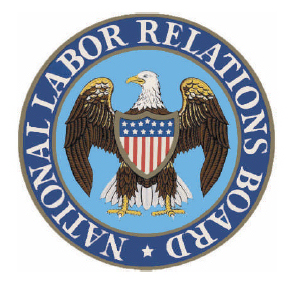
In her latest memo, General Counsel Abruzzo contended, in passing, that NLRB staff are somehow “less constrained by the remedies they may seek in settlement, as opposed to those they may currently seek from the [NLRB].” Moreover, General Counsel Abruzzo reiterated the various types of expansive “consequential damages” and additional remedies she discussed in her GC 21-06 memo which NLRB staff do not currently seek and which Abruzzo suggested they “should” include in any settlement agreement. These expanded remedies, in General Counsel Abruzzo’s view, should include non-backpay economic harm a complainant-plaintiff may have suffered as a result of a retaliatory termination. (An example in the memo included interest or late fees on credit cards to cover living expenses suffered from a retaliatory loss of employment, penalties for early withdrawal of retirement funds necessary to offset lost wages, loss of a home or vehicle due to inability to keep up with loan payments, compensation for damages to the alleged victim’s credit rating, and fees and/or expenses for training or coursework to obtain new employment), as well as remedies unique to unfair labor practices related to immigrant workers and union organizing drives.
Employers should also be aware of the GC 21-07 memo’s suggestion that NLRB staffers include new language in all settlement agreements that greatly impacts employer rights should they breach the agreement. Specifically, General Counsel Abruzzo suggested NLRB staff include default language in all settlement agreements going forward anticipating that the employer may breach the settlement agreement. General Counsel Abruzzo’s suggestion was that NLRB field staff implant language in settlement agreements that allows the NLRB to file a Motion for Summary Judgment with the NLRB, in the event of an employer’s breach of the settlement agreement, on the allegations of the underlying Complaint or Charge (and not just as to the breach). Specifically, General Counsel Abruzzo’s suggested new language would state that the breaching employer deems admitted as true all of the facts alleged in the underlying Complaint or Charge. In other words, the only issue the breaching employer would be able to raise before the NLRB as to such a Motion for Summary Judgment was whether the employer actually defaulted on the terms of the settlement agreement. Such contractual provision greatly restrains an employer’s ability to argue the merits of any underlying allegations, and should serve as a caution to employers contemplating whether to enter into a settlement agreement with the NLRB “just to resolve a non-meritorious dispute, buy peace and get back to work.”
This new memo continues General Counsel Abruzzo’s efforts to implement the Biden Administration’s goal of expanding workers’ rights. The new memo, however, suggests a willingness to subvert United States Supreme Court precedent applicable to remedies in NLRA actions. Employers should continue to exercise caution, and recognize these efforts for what they are: a continuing expansion of unlegislated worker protections. Until there is a court challenge or a change in administration that may seek to rescind the General Counsel memos, employers face a greater potential for damages claims from employees asserting unfair labor practices pursuant to a still as-of-yet unchanged NLRA the Congress has thus far refused to further amend to embrace General Counsel Abruzzo’s aggressive ideas.
Wednesday, September 15, 2021: Learn & Celebrate! It’s National Hispanic Heritage Month

The observation started in 1968 as Hispanic Heritage Week under President Lyndon Johnson. President Ronald Reagan expanded the observance in 1988 to cover 30 days. President George H.W. Bush first proclaimed National National Hispanic Heritage Month on September 14, 1989 in Presidential Proclamation 6021. Since then, each President has taken up the tradition of issuing a Proclamation each year honoring National Hispanic Heritage Month. President Biden’s Proclamation is hyperlinked, below.
September 15th is significant because it is the anniversary of independence for Costa Rica, El Salvador, Guatemala, Honduras, and Nicaragua. In addition, Mexico and Chile celebrate their independence days on September 16th and September 18th, respectively. Also, Columbus Day or Día de la Raza is October 12th.
Other Dedicated Webpages & Learning Opportunities
Thursday, September 16, 2021: White House Safer Federal Workforce Task Force Greenlights Federal Executive Agencies to Impose Vaccination Mandates on Federal Contracts/Subcontracts Beyond Biden’s Federal Contractor Vaccination Mandate
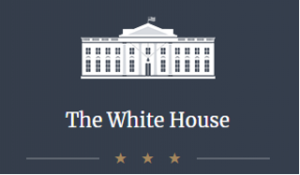
In the meantime, however, the Task Force updated the FAQ portion of its website. Under the “Vaccine” tab, a partially new/partially updated section now appears titled “Federal Contractors and Visitors,” including two new questions and five updated answers to previous questions.
Of particular interest to our readers is this Q&A:
Can agencies incorporate vaccination requirements into contracts that are not covered by Executive Order 14042 (Ensuring Adequate COVID Safety Protocols for Contractors)?
As noted above, the Safer Federal Workforce Task Force has yet to publish the “guidance” the above answer references.
PRACTICE TIP: Federal contractors will have to be vigilant to review EACH new federal contract it is proposing to sign to learn whether the contracting agency has exercised its discretion, beyond President Biden’s direction in Executive Order 14042, to require vaccinations of federal contractor/subcontractor employees.
In The Know
The White House COVID-19 Response Team, the General Services Administration (GSA), and the Office of Personnel Management (OPM) lead the Safer Federal Workforce Task Force. Members include the Centers for Disease Control and Prevention (CDC), the Department of Veterans Affairs (VA), the Federal Emergency Management Agency (FEMA), the Federal Protective Service (FPS), the Office of Management and Budget (OMB), and the United States Secret Service (USSS).
The President created the Task Force to give the heads of federal agencies ongoing guidance to keep their employees safe and their agencies operating during the COVID-19 pandemic.
Thursday, September 16, 2021: E-Verify Reminder to Employers

In March 2020, “DHS Announced Flexibility in Form I-9 Compliance” due to SSA office closures to the general public. E-Verify also extended the timeframe to take action to resolve certain Department of Homeland Security Tentative Nonconfirmations (TNCs) when an employee cannot resolve a TNC due to public or private office closures.
Employers should not take any adverse action against an employee because the E-Verify case is in interim case status, even if the interim status is for an extended period.
Employers must continue to:
- Notify their employees as soon as possible about their TNC results using the Further Action Notice. Employees will use this document to indicate their decision to take action on the TNC;
- Confirm the employee’s decision in E-Verify within ten federal government workdays from the date that the TNC was issued;
- Click “Refer Case” in E-Verify for employees who choose to take action to resolve their TNC; and
- Close the cases of employees who choose not to take action on their TNCs. If your employee received a TNC but no longer works for you, please review the chart below. Despite SSA offices being closed to the general public due to COVID-19, employers must continue to update and close their employees’ cases, if applicable.
See the complete table of how to handle various situations if your employee no longer works for you but received a TNC.
Looking Ahead:
Get Ideas for National Disability Employment Awareness Month This Thursday Via a Twitter Chat!
National Disability Employment Awareness Month (NDEAM) is just a few weeks away. How will you celebrate?
As you look ahead to October, be sure to join the Campaign for Disability Employment and the Employer Assistance and Resource Network on Disability Inclusion (EARN) on
Thursday, September 23, 2021, from 2:00 – 3:00 p.m. EST
Twitter chat on preparing for NDEAM
Hashtag #CelebrateNDEAM
Participants will learn ways employers and others can participate in NDEAM and incorporate this year’s theme, “America’s Recovery: Powered by Inclusion,” into workplace activities. The event will also explore new DOL resources to support employees experiencing Long COVID, inclusive telework strategies and more. To follow and join the conversation, log on to Twitter at the designated time using the hashtag #CelebrateNDEAM.
THIS COLUMN IS MEANT TO ASSIST IN A GENERAL UNDERSTANDING OF THE CURRENT LAW AND PRACTICE RELATING TO OFCCP. IT IS NOT TO BE REGARDED AS LEGAL ADVICE. COMPANIES OR INDIVIDUALS WITH PARTICULAR QUESTIONS SHOULD SEEK ADVICE OF COUNSEL.
SUBSCRIBE.
Compliance Alerts
Compliance Tips
Week In Review (WIR)
Subscribe to receive alerts, news and updates on all things related to OFCCP compliance as it applies to federal contractors.
OFCCP Compliance Text Alerts
Get OFCCP compliance alerts on your cell phone. Text the word compliance to 55678 and confirm your subscription. Provider message and data rates may apply.

